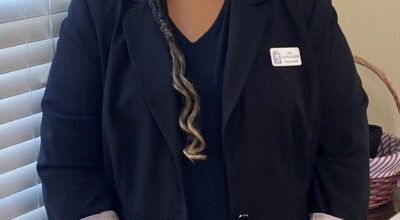Solving for XX and XY: Gender specific classes seem to be working at Salisbury High School
Published 12:00 am Tuesday, December 1, 2009
By Katie Scarvey
kscarvey@salisburypost.com
It’s 10:45 a.m., and the students in a Salisbury High School algebra class file in. The teacher points their attention to the overhead projector and gets them working on a seven-minute factoring exercise.
As the class unfolds, it becomes clear this is not one of those classrooms dominated by one or two students. Voices from all over the room respond when the teacher asks questions.
While it might be a stretch to say they are passionate about algebra, these students seem to be paying attention.
A boy named Chester in the back pipes up when the teacher asks what property is being demonstrated in a certain example.
“Commutative,” he says.
“Good, Chester!” teacher Sidney Allen says.
His classmates concur.
“Chester!” says one approvingly. Another points out that Chester not only has the right answer but a new haircut as well.
Congenial, respectful and cooperative could describe the overall tone of the class.
The students are a diverse group: African-American, Caucasian, Hispanic.
But one sign of diversity is noticeably absent.
All the students are boys.
– – –
Salisbury High School is part of a growing national trend toward utilizing same-sex classrooms (see Lifestyle story on 1B).
This semester, four algebra classes at the school have been separated by gender, with two girls’ sections and two boys’ sections.
Three female teachers ó Sidney Allen, Amy Stegall, and Letishia Chapman ó are teaching the classes.
When asked why Salisbury High decided to schedule classes this way, Dr. Windsor Eagle responded, “Because we could.”
Working with the schedule, Eagle noticed that one algebra class had 16 boys and eight girls, and another had roughly the same proportion, but with more girls than boys.
He consulted with Allen about the possibility of splitting the students by gender.
In her previous job at Southeast Middle School, Allen’s team had experimented with the format and had enjoyed it, he said. Chapman got on board as well, saying that she wouldn’t mind giving it a shot. In addition to her two gender-specific classes, Chapman teaches a coed algebra class.
Rita Foil, communication director for the Rowan-Salisbury Schools, says that Salisbury High is the only school in the system doing gender-specific instruction. Exceptions are health, physical education and chorus classes, which are often separated by gender.
A first-year lateral entry teacher, Chapman says she notices a difference in her classes. The boys bring a lot of energy and testosterone, she says, while the girls tend to bring a bit more drama.
Chapman says that so far, her all boys’ class has the highest average among her three algebra classes, although she believes the girls are about to surpass them. The coed class has the lowest average of the three, she notes.
Allen, who has been teaching for more than 20 years, says she’s been very happy with her experience teaching boys and girls separately.
“I don’t teach any differently,” she says. She believes both the boys and girls are performing better academically than they would be in a coed class. She hasn’t noticed a significant difference in the class averages.
The classroom dynamic is different in the single-gender classes, she says. For one thing, attention-getting behaviors are greatly reduced, she says. Without the opposite sex to impress, girls don’t sashay to the pencil sharpener in an attempt to catch the eye of a boy ó and vice versa.
That means fewer distractions for students, she notes.
She’s also observed that her students seem to worry less in a single-sex classroom about whether or not they’ll be perceived as stupid by their peers if they give an incorrect answer. She believes that both girls and boys are more likely to participate in a single-gender class than in a coed class.
In general, the environment in the single-sex classes tends to be more open and relaxed than in a coed class, she says. Allen says she’s also able to address some non-math-related issues ó like inappropriate dress among female students, for example ó in a more open way than she would be able to in a mixed class.
One of Allen’s students, Neil Emmett, said on Friday that he’s doing “three times better” in the all-male setting because of fewer distractions.
Norris Rankin said he has “no problem” with being in an all-male class and believes it’s easier to stay focused on his work.
Tony Chapman pointed out that in an all-male setting there’s less stress about speaking up in class ó he doesn’t get embarrassed in front of boys the way he might in front of girls.
Other male students nodded in agreement.
Although Tyree Badger noted that class without girls “gets boring,” the consensus in his class is clear: it’s easier to concentrate on math in an all-male environment.
Responses from other students, including girls, sounded the same note (see story on this page).
Overall, Allen says she feels the format has been a success. At the very least, she says, “it’s definitely not hurting anybody.”
Although Allen is an experienced teacher who’s comfortable handling single-sex classrooms, she says she’d welcome training geared toward gender-specific education.
Allen’s co-teacher Amy Stegall is also enthusiastic about the separate classes for girls and boys.
“I love it, absolutely love it,” she says.
Eagle says he isn’t sure what the future of single-sex classrooms will be at Salisbury High.
“You want to make sure you see some results before you go whole hog,” he said.
“Social studies would probably be the next class we worked with,” he said.





